Deciding between leasing or purchasing office printers and copiers is a significant decision for many businesses. This choice can impact your financial health, operational efficiency, and overall productivity. With technology advancing rapidly, the right decision can affect how well your office equipment meets current and future needs. In this blog post, we’ll delve into the critical factors that will help you understand the implications of leasing versus buying, ensuring you make an informed choice that aligns with your business objectives.
Printer Leasing vs Purchasing: Which is Right for Your Business?
Choosing between leasing and purchasing office printers and copiers involves evaluating various factors that can affect your business’s operations and finances. The decision is not just about the initial cost but also involves long-term considerations like maintenance, upgrades, and cash flow management. Here, we will explore the fundamental differences between leasing and purchasing office equipment, offering insights into their respective advantages and disadvantages. By the end of this guide, you’ll be equipped with the knowledge to determine which option best suits your business needs.
What is Printer Leasing?
Printer leasing involves entering into a contractual agreement where a business rents a printer or copier from a leasing company for a specified period. Typically, leasing agreements cover the cost of the printer, maintenance, and sometimes even supplies, which can be a significant advantage for businesses looking to minimize their upfront expenditure. The key terms of a lease agreement include the lease duration, monthly payments, and options for upgrading or buying the equipment at the end of the lease term.
What is Purchasing a Printer?
Purchasing a printer means buying the equipment outright, giving you full ownership. This option involves paying the full cost of the printer upfront or through financing arrangements. Ownership comes with the advantage of no ongoing lease payments and the ability to fully customize and use the printer as needed. However, it also means taking on responsibilities for maintenance, repairs, and eventual obsolescence.
Pros and Cons of Lease a Copier or Printer
Pros of Leasing
- Lower Upfront Costs: Leasing typically requires a smaller initial investment compared to purchasing, which can be beneficial for managing cash flow.
- Flexible Upgrades: Many leases offer options to upgrade to newer models during or at the end of the lease term, allowing you to keep pace with technological advancements.
- Maintenance and Support: Often included in the lease agreement, maintenance and support services ensure that the equipment remains in good working condition without additional costs.
Cons of Leasing
- Higher Long-Term Costs: Over the life of the lease, the total cost may exceed the purchase price of the equipment.
- Lease Obligations: Leasing contracts often come with restrictions and penalties for early termination or exceeding usage limits.
- No Ownership: At the end of the lease, you must return the equipment or purchase it at a residual value, with no equity built up from your payments.
Pros and Cons of Purchasing a Printer or Copier
Pros of Buying
- Full Ownership: Once purchased, the printer is yours, providing complete control over its use and modifications.
- No Ongoing Lease Payments: Avoid recurring payments associated with leasing, which can simplify budgeting and financial planning.
- Customization and Flexibility: Owning the equipment allows you to customize it according to your specific needs and preferences.
Cons of Buying
- High Upfront Costs: Purchasing requires a significant initial investment, which might strain your budget, especially for small businesses.
- Maintenance Responsibilities: As the owner, you are responsible for all maintenance and repair costs, which can add up over time.
- Depreciation and Obsolescence: Purchased equipment can become outdated, requiring additional investment to stay current with technology trends.
Lease or Purchase: Cost Analysis
When deciding between leasing and purchasing, understanding the cost implications is crucial. Upfront Costs for leasing are generally lower, making it easier to manage initial expenditures. Monthly Payments vs. Long-Term Costs should also be considered; while leasing spreads the cost over time, purchasing might be more economical in the long run if you can afford the initial investment. Analyzing these costs in relation to your business’s financial situation will help you determine the most viable option.
Understanding Lease Terms and Agreements
Lease agreements vary widely, so it’s essential to understand their components, including the duration, payment structure, and terms for upgrades or buyouts. Lease Periods and Options to Buy will dictate your long-term commitment and flexibility. Being aware of the Conditions and Restrictions can prevent unforeseen costs and ensure that the lease aligns with your business needs.
Evaluating Your Business Needs
To make an informed decision, assess your business’s unique requirements, such as Print Volume and Frequency, Technology Needs, and Budget Constraints. For instance, if your business experiences rapid growth or frequently needs the latest technology, leasing may offer better flexibility. Conversely, if you prefer to avoid long-term commitments and manage costs more predictably, purchasing might be the better option.
In summary, understanding the nuances of printer leasing versus purchasing is vital for making a decision that supports your business’s financial health and operational efficiency. The following sections will provide a deeper dive into each option’s advantages and disadvantages, cost implications, and factors to consider in making the best choice for your business.
Detailed Comparison of Leasing and Purchasing
What is Printer Leasing?
Printer leasing is a financial arrangement where a business rents a printer or copier from a leasing company for a predetermined period. This lease agreement typically includes several key components:
- Lease Duration: This is the length of time the lease is active, which can range from 12 months to several years.
- Monthly Payments: Businesses make regular payments throughout the lease term, which may include the cost of the equipment, maintenance, and support services.
- Options for Upgrades: Many lease agreements provide the option to upgrade to newer models before the lease term ends, ensuring access to the latest technology without additional costs.
- End-of-Lease Options: At the end of the lease, businesses can return the equipment, renew the lease, or purchase the equipment for a predetermined residual value.
What is Purchasing a Printer?
Purchasing a printer involves buying the equipment outright, which entails:
- Full Ownership: Once purchased, the printer is fully owned by the business, allowing for unrestricted use and customization.
- Upfront Costs: The total cost of the printer is paid either upfront or through financing, which may require a significant initial investment.
- Maintenance Responsibilities: The business is responsible for all maintenance, repairs, and any associated costs throughout the printer’s lifespan.
- Depreciation: The printer’s value decreases over time due to technological advancements and wear and tear, which can impact its resale value.
Pros and Cons of Leasing a Printer or Copier
Pros of Leasing
- Lower Upfront Costs: Leasing requires a smaller initial investment compared to purchasing, which can ease cash flow concerns and allocate funds to other business areas.
- Flexible Upgrades: Leasing allows businesses to keep up with technological advancements by providing options to upgrade to newer models during or at the end of the lease term.
- Maintenance and Support: Many leasing agreements include maintenance and support services, reducing the burden on internal IT staff and ensuring the equipment remains operational without additional costs.
Cons of Leasing
- Higher Long-Term Costs: Over the lease term, the total cost may exceed the purchase price of the equipment. Long-term leasing can result in higher cumulative costs.
- Lease Obligations: Leasing contracts often come with restrictions, such as limitations on usage or early termination penalties, which can limit flexibility and incur additional costs if circumstances change.
- No Ownership: At the end of the lease, businesses must either return the equipment or purchase it at a residual value. There is no equity built from the lease payments.
Pros and Cons of Purchasing a Printer or Copier
Pros of Buying
- Full Ownership: Purchasing gives the business complete control over the printer, allowing for customized use and modifications according to specific needs.
- No Ongoing Lease Payments: Once the printer is paid for, there are no further monthly payments, which can simplify budgeting and financial planning.
- Customization and Flexibility: Owning the printer allows for changes and upgrades as needed, without being restricted by lease terms.
Cons of Buying
- High Upfront Costs: Purchasing requires a substantial initial payment, which can strain financial resources, particularly for small businesses or startups.
- Maintenance Responsibilities: The business is responsible for all maintenance and repair costs, which can be significant over the printer’s lifespan.
- Depreciation and Obsolescence: Purchased equipment can become outdated, and its value depreciates over time, necessitating additional investment to keep up with technological advancements.
Lease vs Purchase: Cost Analysis
Upfront Costs
- Leasing: Typically involves lower initial costs, making it easier to manage cash flow and allocate funds to other areas of the business. Leasing often requires only a small initial down payment or sometimes no down payment at all.
- Purchasing: Involves a larger upfront expenditure, which can impact cash flow but avoids ongoing lease payments. This initial cost can be mitigated through financing options, though it still represents a significant outlay.
Monthly Payments vs. Long-Term Costs
- Leasing: Monthly lease payments are often lower than financing costs for purchasing, but over time, the total lease payments can exceed the cost of buying the equipment outright.
- Purchasing: While the upfront cost is higher, purchasing may be more cost-effective in the long run if the printer is used for an extended period and well-maintained, potentially leading to lower total costs over the equipment’s lifecycle.
Understanding Lease Terms and Agreements
Key Components of a Lease Agreement
- Lease Duration: The term of the lease agreement, which can range from 12 months to several years, impacting both monthly payments and long-term costs.
- Monthly Payments: Regular payments that cover the cost of the equipment, maintenance, and sometimes supplies, with amounts determined by the lease terms.
- Options for Upgrades or Buyouts: Many leases offer the option to upgrade to newer models or purchase the equipment at the end of the lease term. Understanding these options can help in planning future needs.
Lease Periods and Options to Buy
- Lease Periods: The length of the lease affects monthly payments and the total cost of leasing. Shorter leases may have higher payments but offer more flexibility.
- Options to Buy: At the end of the lease, businesses may have the option to purchase the equipment at a predetermined price. This can be beneficial if the equipment is still in good condition and continues to meet business needs.
Conditions and Restrictions
- Usage Limits: Some leases impose limits on usage, such as a maximum number of prints per month. Exceeding these limits can result in additional charges.
- Early Termination Fees: Breaking a lease early can incur penalties, making it important to carefully consider the lease term and your business’s long-term needs.
Evaluating Your Business Needs
When deciding between leasing and purchasing, consider the following factors:
- Print Volume and Frequency: Businesses with high print volumes may benefit more from purchasing due to the potential cost savings over time, while those with lower volumes might find leasing more advantageous.
- Technology Needs and Upgrades: If keeping up with the latest technology is crucial, leasing provides the flexibility to upgrade to newer models more frequently.
- Budget and Financial Considerations: Assess your current financial situation and future cash flow. Leasing can ease budget constraints with lower upfront costs, while purchasing might offer long-term savings despite the higher initial expense.
FAQs About Printer Leasing vs Purchasing
Q1: What are the pros and cons of leasing an office copier?
Leasing an office copier offers benefits such as lower upfront costs and the ability to upgrade to a new printer or copier more frequently. However, the cons of leasing include potentially higher long-term costs compared to buying a copier or printer outright, and restrictions outlined in the copier lease agreement. Additionally, you will need to decide if you want to purchase the copier at the end of the lease or return it.
Q2: Is it better to buy or lease an office printer?
Choosing whether to buy or lease an office printer depends on your business needs and financial situation. Leasing offers lower initial costs and benefits like included maintenance, but buying a printer outright can be more cost-effective long-term. Evaluate the advantages and disadvantages of leasing versus purchasing to determine which aligns best with your operational and budgetary goals.
Q3: What is the difference between buying vs leasing a copier?
Buying vs leasing a copier involves comparing ownership benefits with rental flexibility. Purchasing one involves a higher upfront cost but provides full ownership and no further payments, while leasing allows for lower initial costs and easier upgrades but can lead to higher total expenses over time. Consider the copier and printer leasing options to decide the best fit for your business.
Q4: What should I consider when deciding whether to buy or lease an office copier?
When deciding whether to buy or lease an office copier, consider factors such as the initial investment, long-term costs, and whether you want to upgrade frequently. Purchasing office equipment outright may provide long-term savings and ownership benefits, while leasing can offer lower upfront costs and included services. Evaluate the benefits of leasing against the pros and cons of buying to make an informed decision.
Q5: What are the benefits of leasing a new office printer?
Leasing a new office printer can provide lower upfront costs, flexible upgrade options, and often includes maintenance services. However, be aware of the conditions of the lease and the potential for higher total costs compared to buying. Leasing can enable businesses to use the latest technology while managing cash flow more effectively.
Q6: Can I negotiate the terms of a copier lease agreement?
Yes, you can often negotiate the terms of a copier lease agreement, including monthly payments, lease duration, and maintenance coverage. Discussing these terms with leasing companies can help you tailor the agreement to better fit your business needs and financial situation, whether you want to lease a device or explore other leasing options.
Q7: What happens at the end of a lease for a copier or printer?
At the end of a lease for a copier or printer, you generally have options such as returning the equipment, renewing the lease, or purchasing the copier at a residual value. The end of a lease provides an opportunity to decide if you want to lease again, buy the copier outright, or explore other options based on your business’s needs.
Q8: What are the advantages of buying an office copier outright?
Buying an office copier outright offers full ownership, freedom from lease restrictions, and potentially lower long-term costs compared to leasing. This approach eliminates ongoing lease payments and allows for unrestricted use and customization of the copier. Consider the upfront costs versus long-term savings when deciding if purchasing is the right choice.
By thoroughly analyzing these factors, you can determine whether leasing or purchasing aligns better with your business’s operational needs and financial goals. The next section will explore the benefits of each option in more detail, helping you make a more informed decision based on your specific requirements.
For more information and services you can contact us for a free quote and estimation.
- Address: 280 Business Park Circle, # 415 St. Augustine, FL 32095
- Email: info@goabsinc.com
- Call Us: (904) 438-2701




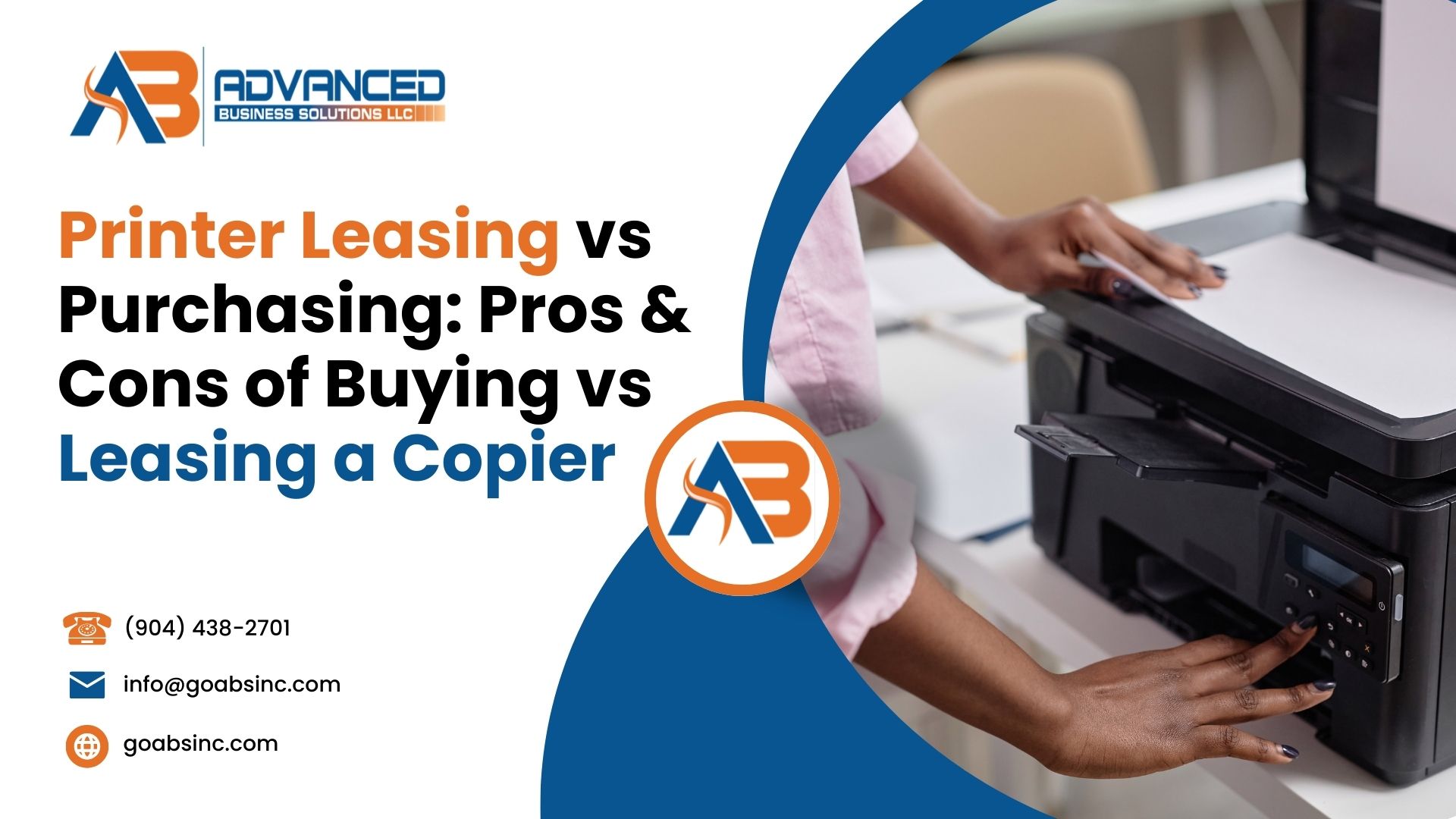
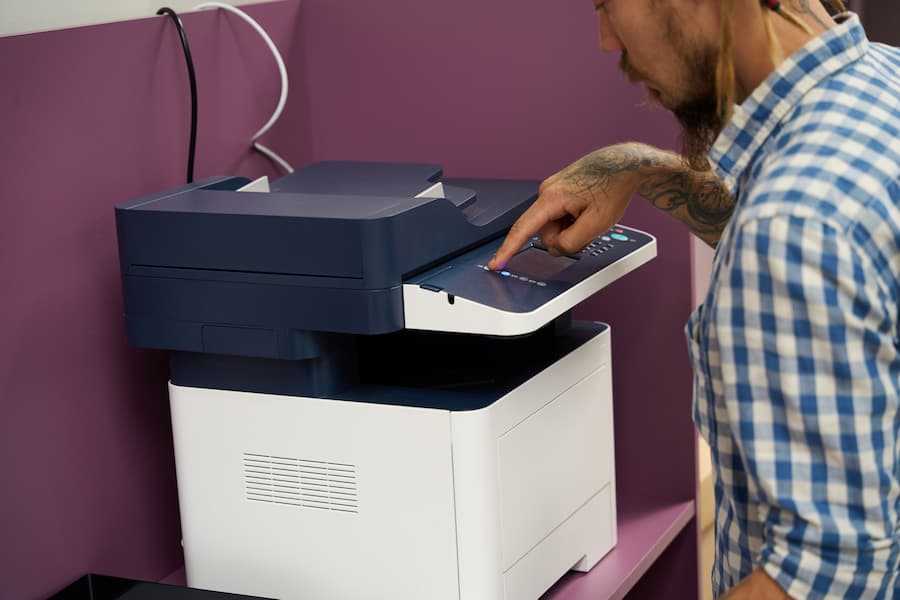
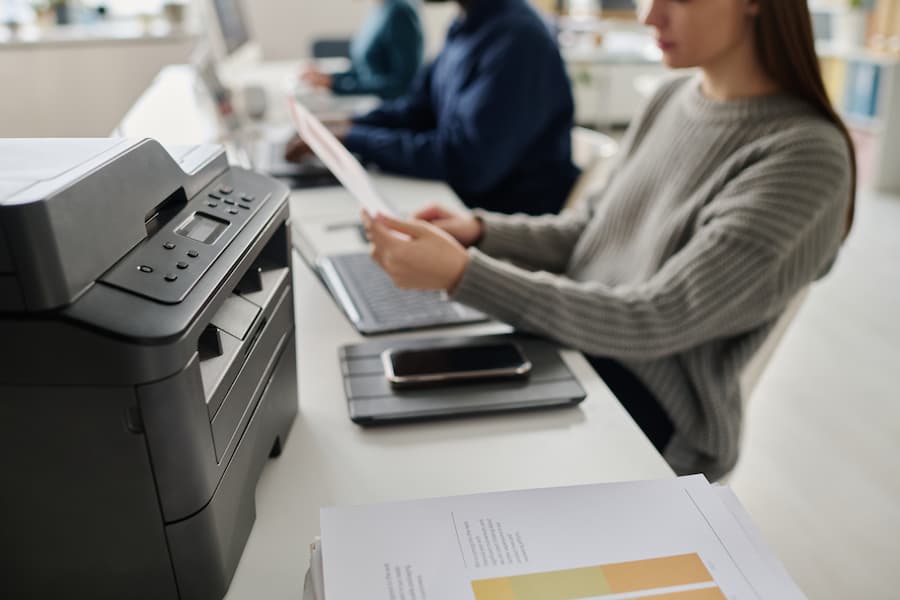
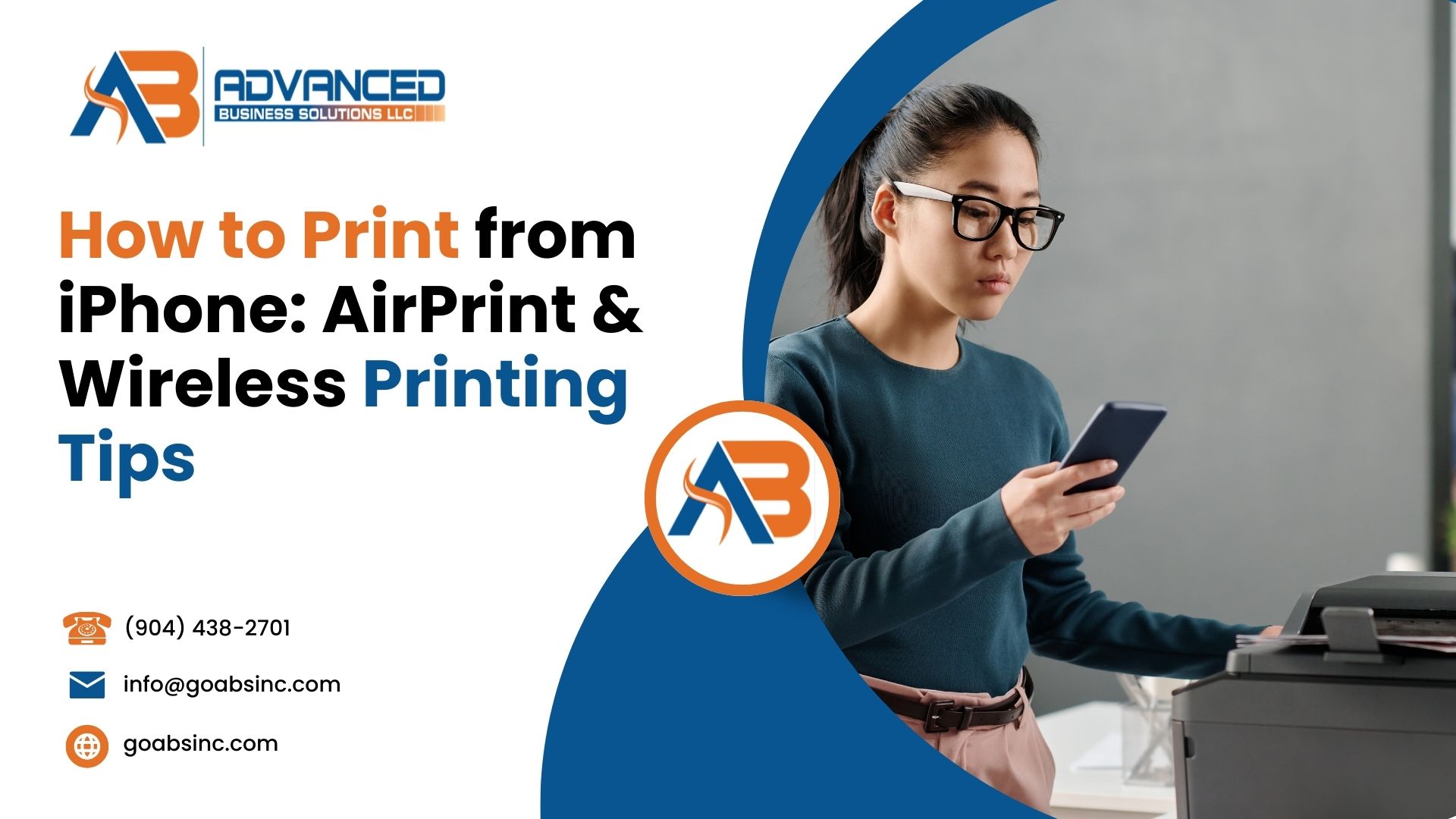
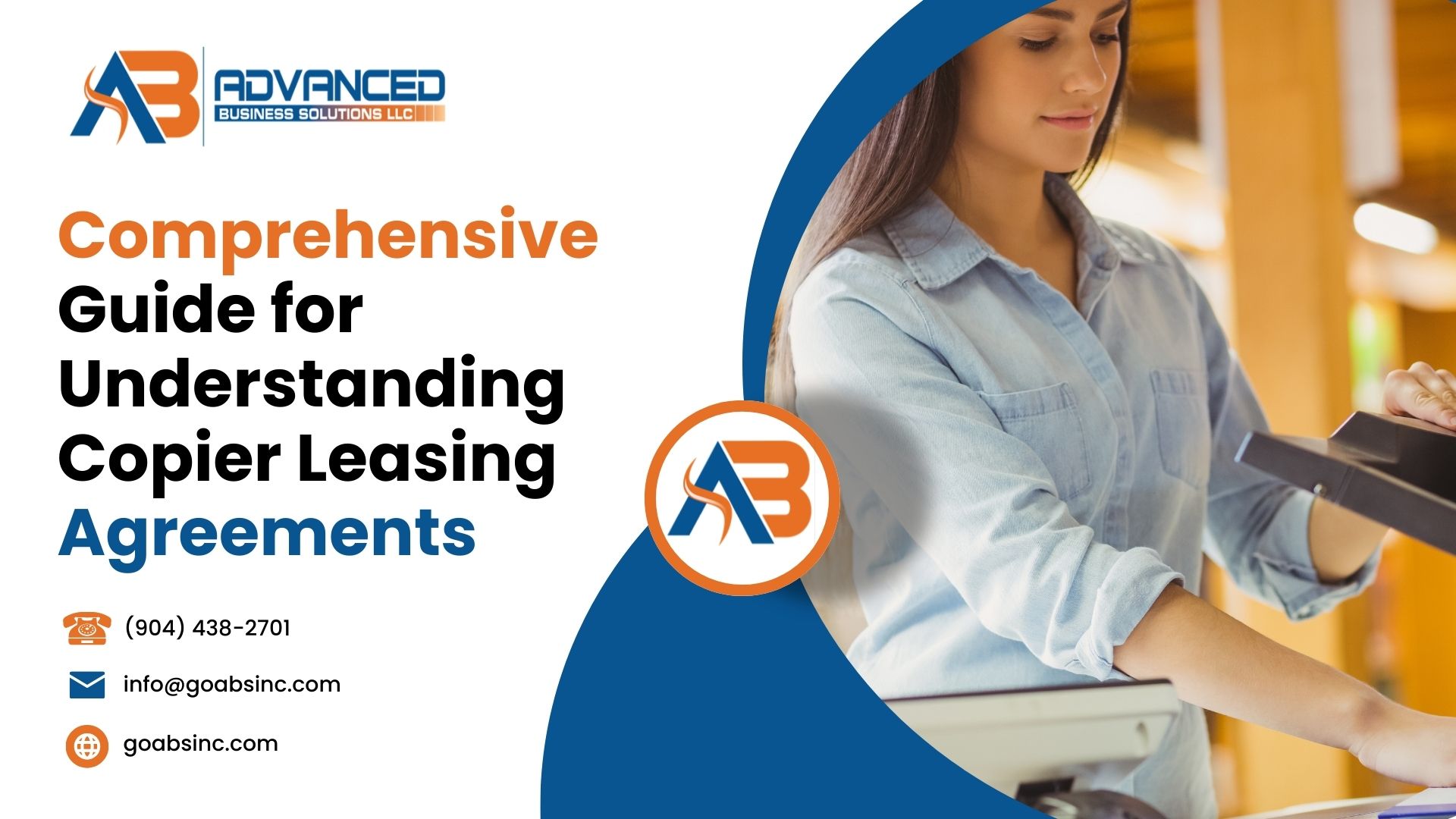

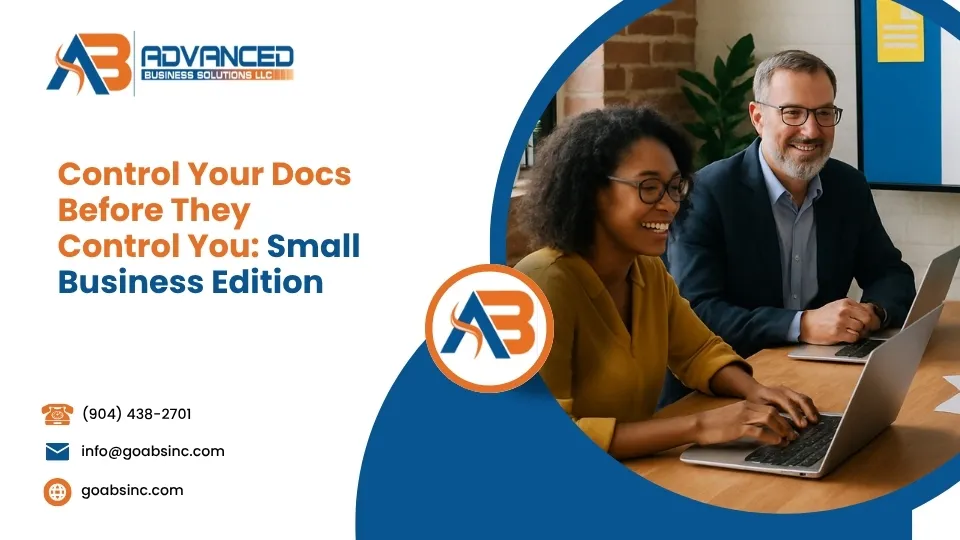
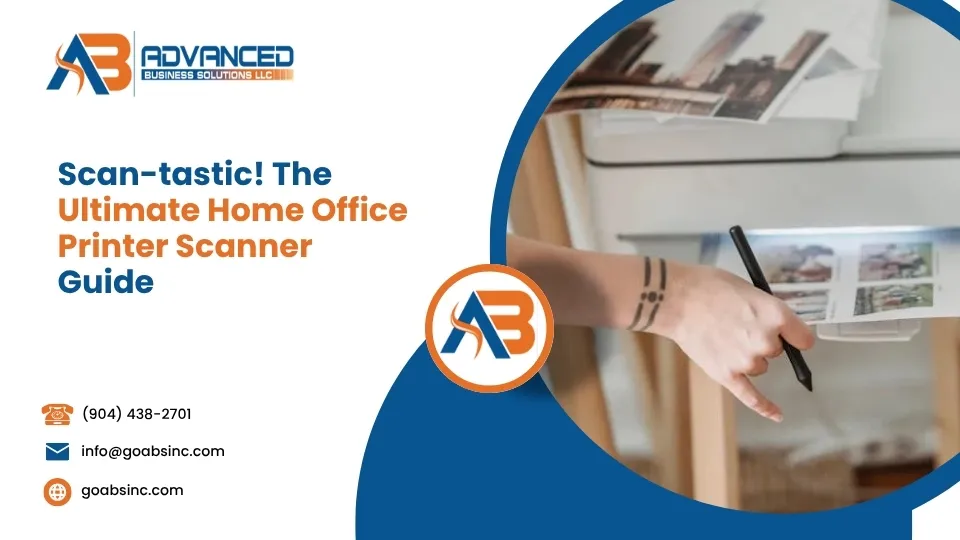
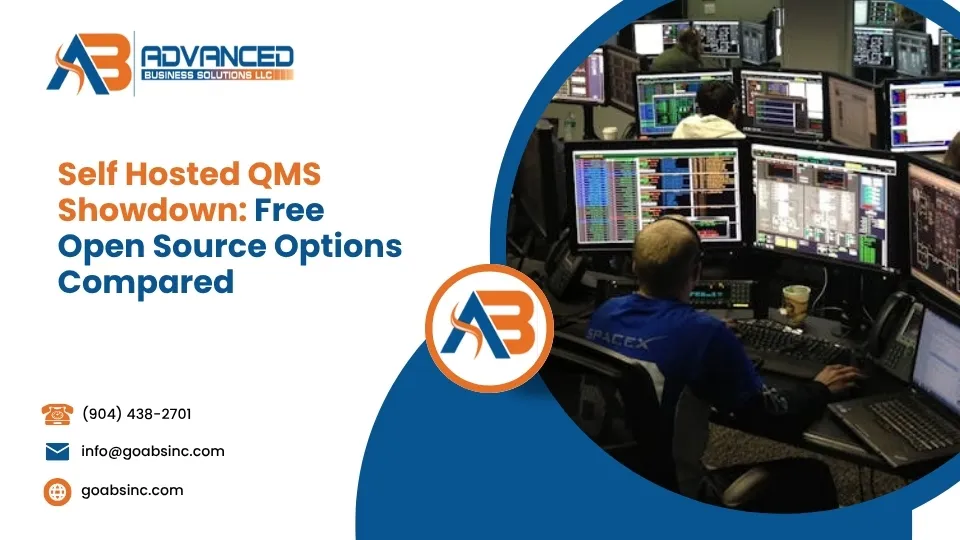
Comments are closed